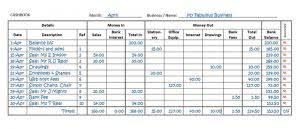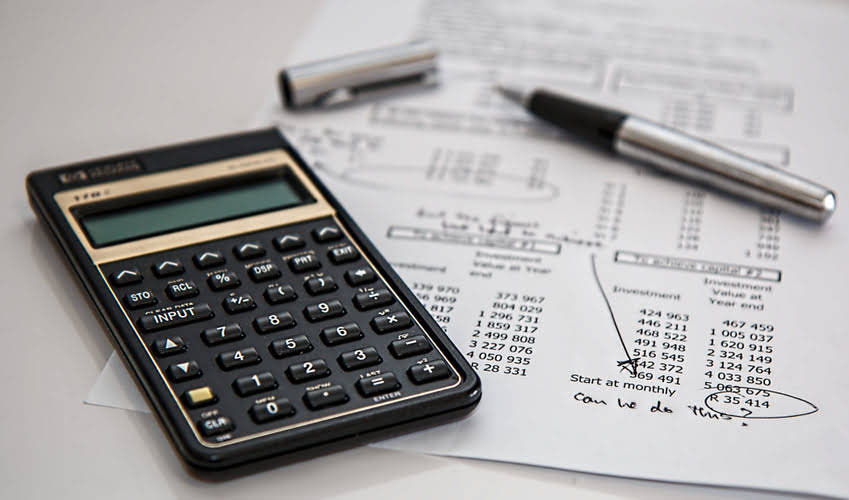
Its concept is also to express the relationship of the balance sheet items which are assets, liabilities, and owner’s equity. As we have seen in the example above, the $50,000 of cash which the owner injects into business becomes the assets of $50,00. Since ASI’s assets increase by $10,000 and stockholders’ equity increases by the same amount the accounting equation is in balance. The totals indicate that as of midnight on December 7, the company had assets of $17,200 and the sources were $7,120 from the creditors and $10,080 from the owner of the company. The accounting equation totals also tell us that the company had assets of $17,200 with the creditors having a claim of $7,120. Since ASC has completed the services, it has earned revenues and it has the right to receive $900 from the clients.
Corporation Transaction C6.
- This transaction ultimately reduced 50k worth of cash and added 50k worth of raw material to the business.
- Hence, every financial transaction affects at least two accounts keeping the equation in balance.
- Financial statements are based on this equation, and they provide a snapshot of a company’s financial position.
- For example, when a company is started, its assets are first purchased with either cash the company received from loans or cash the company received from investors.
If at any point the sum of debits does not equal the sum of credits, it may indicate a mistake has been made in the recording of financial transactions. For new businesses, the accounting equation is an essential tool for keeping track of their financial position. By monitoring their assets, liabilities, and equity, new businesses can make informed decisions about how to allocate their resources and grow their business. For sole proprietorships, the accounting equation is used to determine the owner’s equity. This is important because it helps the owner to understand the financial position of their business and make informed decisions about its future.
- In other words, we can say that the value of assets in a business is always equal to the sum of the value of liabilities and owner’s equity.
- Rather, transactions are recorded into specific accounts contained in the company’s general ledger.
- Any change in the asset account, there should be a change in related liability and stockholder’s equity account.
- This section explores the factors that lead to changes in the accounting equation and how these changes are analyzed.
- The accounting equation is not just theoretical; it has real-world applications in managing a company’s finances.
Arrangement #3: Assets = Liabilities + Owner’s Capital – Owner’s Drawings + Revenues – Expenses
After each transaction, the basic accounting equation should remain in balance. They include cash on hand, cash at banks, investment, inventory, accounts receivable, prepaid, advance, fixed assets, etc. This is a contra owner’s equity account, because it has a debit balance if draws were Accounting Periods and Methods made. Even though it is a balance sheet account, it is a temporary account. A gain is measured by the proceeds from the sale minus the amount shown on the company’s books.

What is equity and how does it relate to the accounting equation?

If the accounting equation is unbalanced, debits don’t equal credits in the trial balance, and any financial statements generated would be unreliable and inaccurate. The accounting equation is also called the balance sheet equation and the fundamental accounting equation. Other names for the balance sheet are statement of financial position or statement of financial condition. The company’s financial position is reflected as a snapshot of account balances from the balance sheet at the end of a reported accounting period. It’s a tool used by company leaders, investors, and analysts that better helps them understand the business’s financial health in terms of its assets versus liabilities and equity.
- While the accounting equation provides valuable insights, it also has certain limitations.
- Fixed Assets are long-term assets that a company owns and uses in the production of its goods or services.
- For example, in a farming business, the assets would be the land and cattle, and the liabilities would be any debts and creditors they owe money too.
- Assets represent the ability your business has to provide goods and services.
- The owner’s equity is the balancing amount in the accounting equation.

This equation is used to track a company’s financial health and ensure that its assets are not being overspent. By adhering to the accounting equation, businesses can establish their total assets, liabilities, and equity, enabling them to understand their financial health and net worth at any given time. This section delves deeper into the relationship between double-entry bookkeeping and the accounting equation. It explains how every financial transaction is recorded in a way that keeps the Car Dealership Accounting assets, liabilities, and equity in balance. Double-Entry Bookkeeping is a method of recording financial transactions where each transaction is recorded in at least two accounts – a debit and a credit.
- The accounting equation ensures that the balance sheet remains balanced.
- He has been a manager and an auditor with Deloitte, a big 4 accountancy firm, and holds a degree from Loughborough University.
- The basic accounting equation is the foundation of accounting principles, and it is crucial for anyone who wants to learn accounting.
- A current asset whose ending balance should report the cost of a merchandiser’s products awaiting to be sold.
- From setting up your organization to inviting your colleagues and accountant, you can achieve all this with Deskera Books.

Small business owners typically have a 100% stake in their company, while growing businesses may have an investor and share 20%. While single-entry accounting can help you kickstart your bookkeeping knowledge, it’s a dated process that many other business owners, investors, and banks won’t what is basic accounting equation rely on. That’s why you’re better off starting with double-entry bookkeeping, even if you don’t do much reporting beyond a standard profit and loss statement. However, because accounting is kept on a historical basis, the equity is typically not the net worth of the organization.
